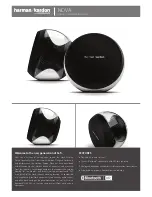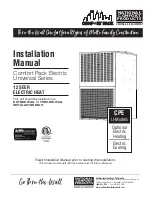
Special Welding Techniques
Section 5
Low Alloy Steel
Generally, the high-strength, low alloy steels are satisfactorily stud welded when their carbon content is 0.15 percent or
lower. This range fits the analyses of low alloy steels used in welding and forming operations. If the carbon content exceeds
0.15 percent, it may be necessary to preheat the work to a low preheat temperature to obtain desired toughness in the weld
area.
When the hardness of the heat-affected zones and the stud fillet does not exceed 30 Rockwell C, studs can be expected to
perform well under almost any type of severe service. Although good results have been obtained with hardness ranges up to
35 Rockwell C, it is best to avoid extremely high working stresses and fatigue loading. In special cases where microstructures
are important, the weld should be evaluated and qualified for the specific application considered. Since alloy steels vary in
toughness and ductility at high hardness levels, weld hardness should not be used as the sole criterion for weld evaluation.
heat Treated Structural Steel
Many structural steels used in shipbuilding and in other construction are heat-treated at the mill. Heat-treated steels re-
quire that attention be given to the metallurgical characteristics of the heat-affected zone. Some of these steels are sufficient-
ly hardenable that the heat-affected zones will be martensitic. This structure will be quite sensitive to underbead cracking,
and it will have insufficient ductility to carry impact loads. Therefore, for maximum toughness in these steels, a preheat of
700°F (370°C) is recommended. Consideration of the application and end use of the stud will further influence the welding
procedures to be followed.
Stainless Steel
Most classes of stainless steel may be stud welded. The exceptions are the free-machining grades. However, only the
austenitic stainless steels (300 grades) are recommended for general application. The other types are subject to air harden-
ing, and they tend to be brittle in the weld area unless annealed after welding. The weldable stainless steel grades include
American Iron and Steel Institute (AISI) Types 302, 304, 305, 308, 309, 310, 316, 321, 347, 410 and 430. Types 302, 304 and
316 are most commonly used for stud welding.
Stainless steel studs may be welded to stainless steel or to mild steel as the application may require. The welding setup used
is the same as that recommended for low-carbon steel except for an increase of approximately 10 percent in power require-
ment. Where stainless steel studs are to be welded to mild steel, it is essential that the carbon content of the base metal not
exceed 0.20 percent. When welding stainless steel studs to mild steel with 0.20 to 0.28 percent carbon, or to low-carbon
hardenable steels, Type 308, 309, or 310 studs are recommended. Because of the composition of the weld metal when
chromium-nickel alloy studs are welded to mild steel, the weld zone may be quite hard. The hardness will depend on the
carbon content in the base metal. It is possible to overcome this by using studs with high-alloy content such as Type 309 or
310. It is also suggested when welding stainless steel studs to mild steel that a fully annealed stainless steel stud be used.
Plated Material
Stud Welding can be successfully accomplished onto plated base materials. Care must be taken when arc welding onto
plated materials as harmful gasses can be generated. Typical plating on base materials is zinc on galvanized sheet. The rust
prohibitive zinc is burned away in the weld zone and no longer provides rust protection at the weld zone. Even if stainless
steel fasteners are used there is potential for corrosion in the weld zone.
Frequently, corrosion resistance is desired on the fastener, yet the cost of stainless is prohibitive. Many manufacturers pro-
duce weld studs with various platings. Most common is a nickel plate, but other platings are available. As with plated base
materials, the plating is burned away in the weld zone. There is a potential for corrosion in the weld zone.
Содержание Smartweld SW1200
Страница 9: ...Safety Precautions Section 1 Symbols and Definitions...
Страница 14: ...14 Installation Set Up Section 2 230 Volt Jumper Configuration 60Hz 460 Volt Jumper Configuration 60Hz...
Страница 40: ...40 Parts List Section 9 230 460 60 Hz Parts List...
Страница 42: ...42 Schematic Diagram Section 10...
Страница 44: ...44 Parts List Section 11 220 380 50 Hz Parts List...















































